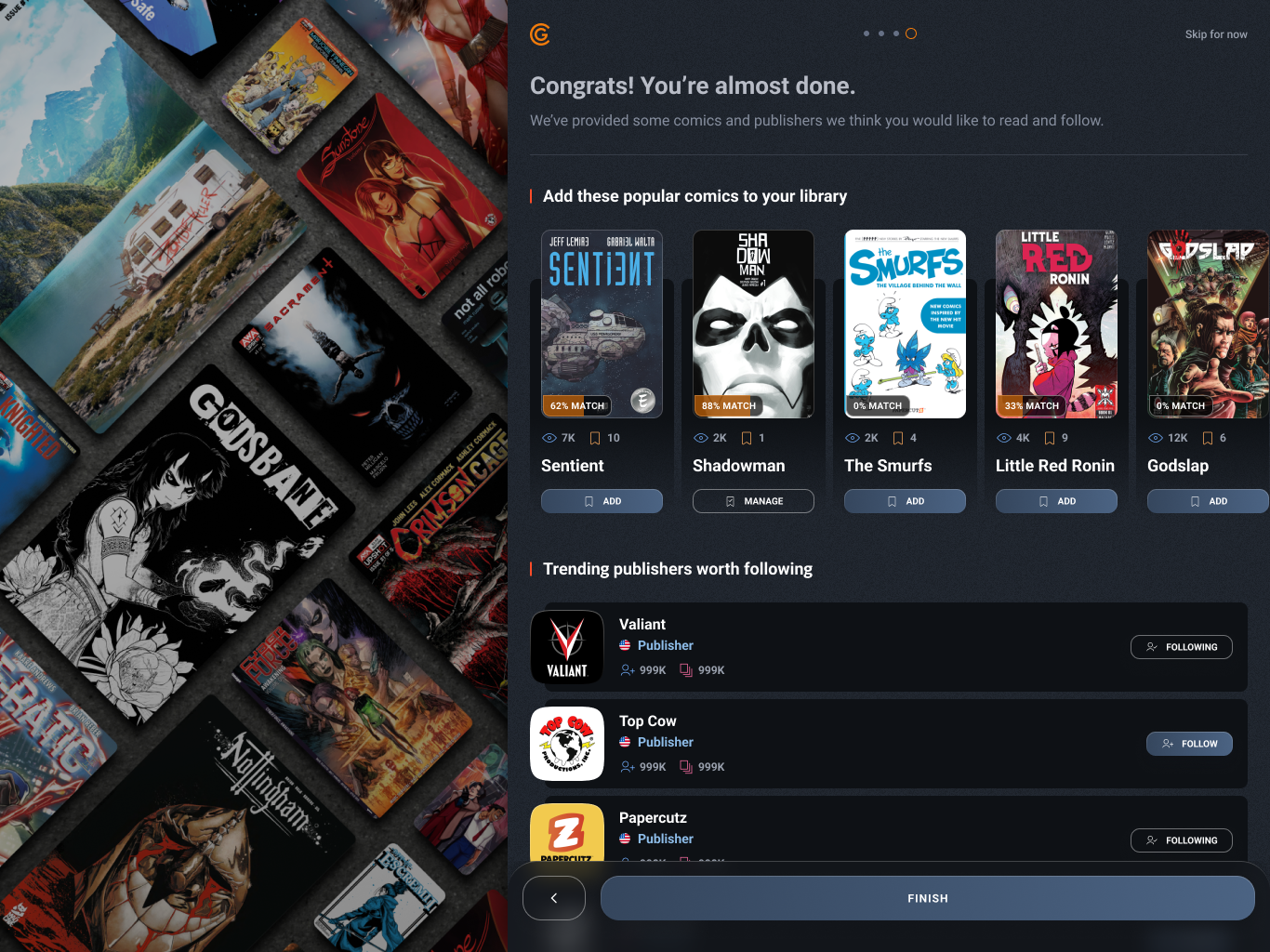
By Anthony Ha
Remember digital comics?
Yes, webcomics and webtoons exist — and they’re pretty popular, too. But digital as a whole still accounts for less than 10 percent of total North American comics and graphic novel sales. The biggest player, Amazon-owned Comixology, seems to be on life support.
Or to put in more personal terms: I tried out Comixology, Madefire, and other apps more than a decade ago. I was impressed by some of the tech — but none of it stuck. Today, I still do all my comics reading in print.
Finally, though, we’ve got at least two new companies — GlobalComix and Omnibus — that have the potential to shake things up. Omnibus hasn’t launched yet; GlobalComix is getting close. In fact, its web reading experience is already live, and founder/CEO Christopher Carter said we can expect iOS and Android apps to launch in late April. (He considers the app release to be the company’s true launch.)
Of course, Carter is aware of all those other failed apps, and he has a diagnosis for what went wrong. He pointed to 2014 as the turning point when digital sales started to plateau — and, not coincidentally, when Amazon acquired Comixology and quickly turned off in-app purchases in iOS.
“You had this situation where the only player in the market had an app in which you couldn’t actually purchase and unlock content in the app itself,” Carter said.
Compounding the problem, he added, was the fact that Comixology and other apps “catered to the major publishers,” and to the “specific type of story” that those publishers told. That was great for superhero fans, but not so great for building a new audience of potential readers.
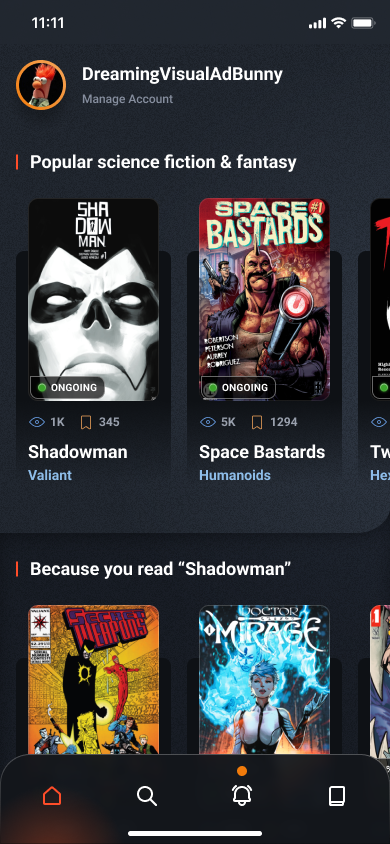
GlobalComix is taking a broader approach. Yes, it recently announced deals with mainstream American (if not exactly superhero-centric) publishers like Image, Boom Studios, and Archie. But the same announcement also included a partnership with manga giant Tokyopop. Other publishers who were already working with GlobalComix include TKO Studios, Valiant Entertainment, and Humanoids.
The goal, Carter said, is to cover the full spectrum of global comics, from manga to webtoons to, yes, superheroes, albeit without the big guns published by DC and Marvel. In addition, independent publishers and creators can upload their comics directly to the platform, as long as those comics align with the company’s content policy.
It’s not that any single reader is likely to be interested in every one of those comics. Instead, the vision is similar to Netflix — making sure that every reader who tries out the app can find something that matches their interest.
“A lot of creators and publishers operated under [the idea that] their audience is ‘comic readers,’” Carter continued. “But comic readers are incredibly diverse. It needs to be approached from a psychographic marketing perspective [i.e., tailoring different recommendations to different tastes], rather than a top-down comics readers audience.”
In advance of showing off the still-in-development app at C2E2 this weekend, Carter provided early access to a handful of journalists and reviewers. The basics should be easy for any reader to pick up: You create a login, answer a few questions about the publishers and genres that interest you, then you’re presented with recommendations, and you can start reading immediately.
The app definitely had some rough edges — for example, I spent several minutes fruitlessly swiping before I realized I’d selected an unflipped manga story that had to be read in the opposite direction. But when I went through my nitpicks with Carter, he suggested that almost everything I mentioned would be fixed before launch. (For example, there will be guidance telling readers which way to swipe.)
GlobalComix already seems to have done a lot of the work needed to create a seamless reading experience: Anytime I got caught up in a story, I mostly stopped noticing any UI glitches or thinking about the interface at all. And some awkwardness may be unavoidable in converting print comics to digital — for example, needing to fiddle with the settings when you come across a multi-page spread, or when the comic itself changes orientation.
Basic access is free, while a lot of the content is paywalled. Carter said GlobalComix’s business model, where readers get access to the full library for a monthly subscription fee (currently $7.99 per month, after a $1.99 trial), should make for a more frictionless reading experience than requiring you to purchase each book. And again, he pointed to his hopes for reaching a global audience, suggesting that readers in certain international markets will either be unwilling or unable to afford the cost of individual books. (That said, you’ll also be able to buy downloadable, DRM-free copies on a la carte basis.)
Publishers and creators get to decide what’s inside and outside the paywall. For example, I read the first few pages of Jeff Lemire and Gabriel Walta’s Sentient for free — just enough to hook me before I hit the paywall, and I quickly paid up so I could find out what happened next.
My biggest concern? When I first opened the app and saw a menu of unfamiliar comics, I felt overwhelmed. Carter suggested that this, too, should be better at launch, as GlobalComix introduces more editorial curation to the front page, and as it brings in well-known titles from those newly-signed publishers. (There are more than 40,000 books in the current library, and the company says another 25,000 are in the pipeline).
Overall? The GlobalComix team definitely has a lot of work ahead of it. But for the first time in years, it feels like print has some real competition.
More screenshots from the mobile and tablet versions of the app:
Search tools:
Tablet version of the “My Shelf” page


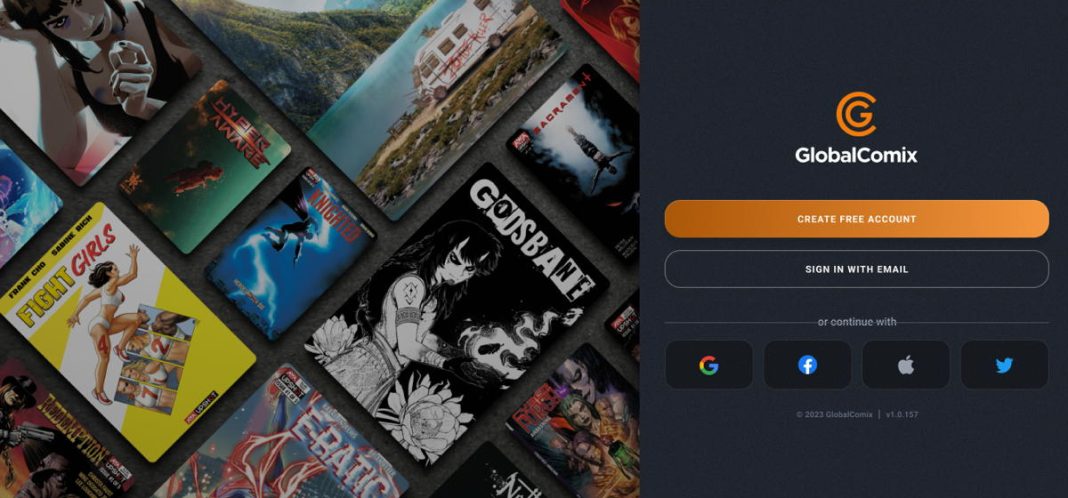
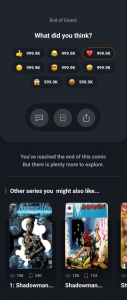
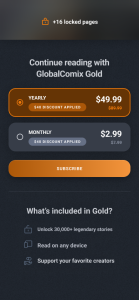

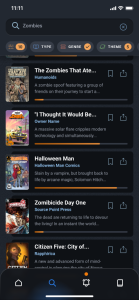
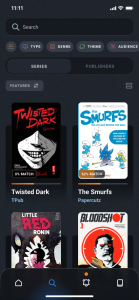
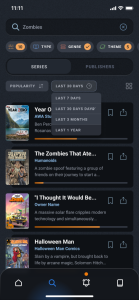
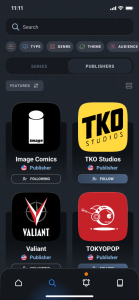
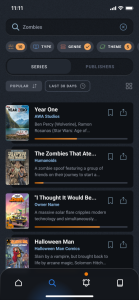
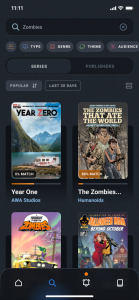
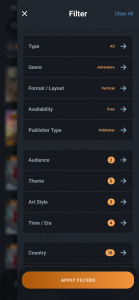
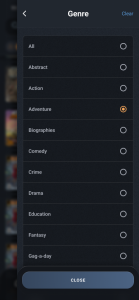
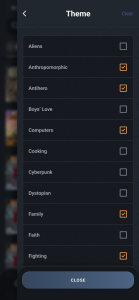
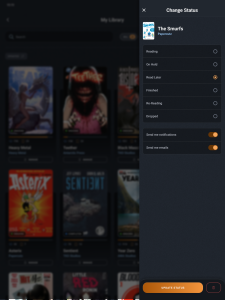
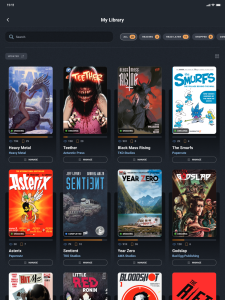
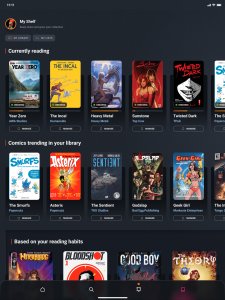

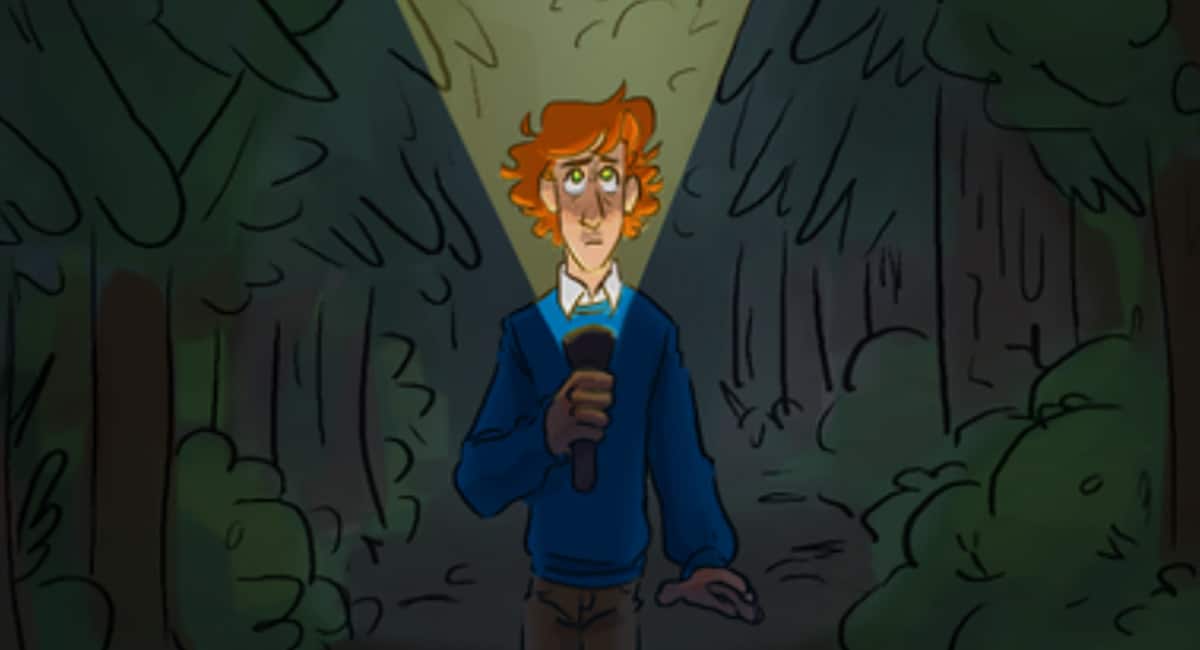



I’ve been waiting for this from GlobalComix for a while now! This is a gamechanger – I’m just hoping the comics community gets onboard. It’s the promise that Comixology Unlimited had made before Amazon took over and gutted it.
Plus, the GlobalComix team is swell. Very quick to respond to concerns via their Discord or Twitter.
Comments are closed.